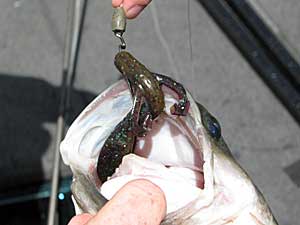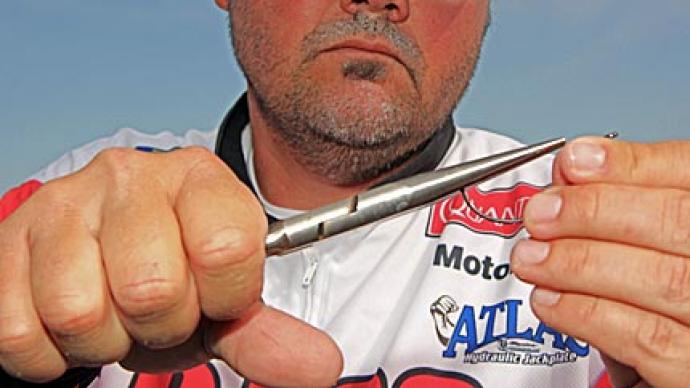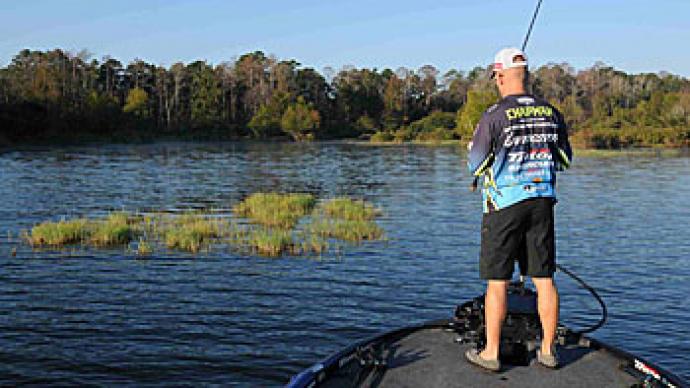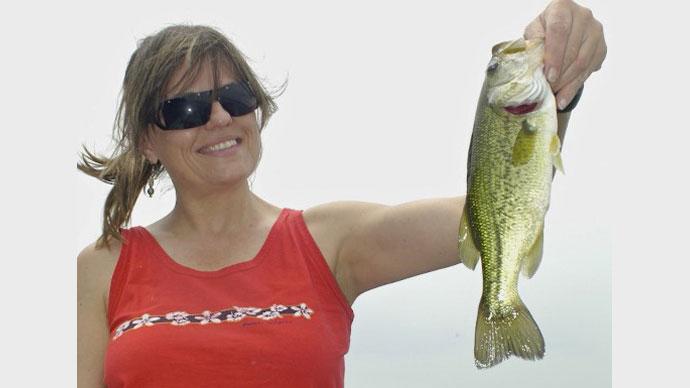
One of the most important links between a fisherman's success at catching fish is the hook used. A successful day on the water can be won or lost by a poor hook. Whether you're a casual fisherman, an avid weekend angler, or a diehard tournament fisherman, overlooking your hooks can make a big difference in having an average fishing day or one that is remembered for a lifetime.
These days of high pressured fishing waters, bites sometimes come less often, making it more critical than ever to ensure that we make every strike count. The best way to catch every fish that bites is to use the proper hook for the bait you are using and make sure the hook is sharp.
Through the decades, hooks have continued to evolve. And the current decade is no exception. Manufacturers have honed our present-day hooks into a precision tool for hooking and catching fish by using unique materials and modern technologies to create the sharpest hooks and offer styles for every fishing situation.
There are as many hook styles available today as there are types of fish. Hooks have been specifically designed for every fishing from panfish to sailfish and everything in between. It's great there is such a myriad of hooks available today. We no longer need to settle on using a few types of hooks for the many types of baits we fish with. Unfortunately, though, as with every good thing, there is the downside. How do we know which style and size are the best to use with all the styles available? The best way to know what hook is best for each application is by familiarizing yourself with all of the available styles and the advantages of each.
Hook Styles
Hook style relates to the overall shape of the hook. I believe many hook styles can be broken down into a few basic categories - Live bait hooks, Artificial (soft plastic) bait hooks, and Manufacturer use hooks. No matter what a hook looks like, it will almost always fit into one of these three categories. And while there is a multitude of styles to be found in each category, I'll only mention some of the most popular styles.
Manufacturer hooks are used to make artificial flies, jigs, crankbaits, and spinnerbaits. While some hobbyists may use these to make their lures or tying flies, most anglers don't need them, so I won't go into them here.
Hooks in the Live bait category usually include Octopus style, typically used for rigging live minnows, cut bait, or Salmon eggs; O'Shaughnessy and Straight shank styles used for Minnows and cut bait; and Aberdeen style used for live worms and nightcrawlers. Most live bait hooks can be recognized by the barbs on the hook shank. These barbs aid in keeping the bait firmly on the hook. Live bait hooks can also be purchased "snelled," meaning they are pre-rigged with about 6 to 12 inches of monofilament with a loop on the other end for tying directly to the angler's line.
The artificial bait hook category typically would include offset worm hooks for rigging plastic worms and soft plastic jerkbaits; Aberdeen and Sproat are commonly used for plastic worms, and the newer Kahle style hooks are becoming popular with fishermen using a variety of soft plastic baits. Some of these hooks also come with shank barbs to help keep the bait securely on the hook.
Hook Points
Many hook points are available, but the most effective type may be best left up to the individual's discretion and pocketbook. The more standard points like the spear and tapered piercing points are mechanically sharpened. They are the most economical and can be easily re-sharpened for reuse with a file or stone. The newer chemically sharpened points are as the name implies. They are sharpened chemically. These are typically much sharper than the mechanically sharpened hooks but are much more expensive, though it is impossible to regain a good point after dulling. Thus having a shorter life span.
If you have always had trouble sharpening your hooks properly to your satisfaction or have never wanted to take the time to do so, the latter may be what you are looking for.
Hook Gaps
The hook gap is the area between the shank and the hook point. Anglers have been aware of the benefits of broader gap hooks for some time. The larger the bait typically dictated the size hook because of the amount of gap needed for the bulk of the bait. In the past, a large enough gap meant using a larger hook size. With wide gap hooks, a smaller, less obtrusive hook can be used and not dissuade from the effectiveness of the hook.
Selecting Hooks
Now that you know all about the different hooks and their features, you're ready to purchase what you need. Well, not quite yet. While knowing what style and size are needed is essential, you should know a few other tips to ensure that you are getting a quality hook that will hold up to your needs.
As with all products on the market, not all hooks are created equal. Each brand has its quality level, and before you make your purchase, you need to be sure that the one you choose will hold up in the field. First, check the eye of the hook to be sure it is closed all the way. A hook with an eye that is not crimped could allow your knot to slip off the hook while fighting a fish. Also, make sure the eye is smooth or isn't full of paint that could nick or fray your line after it is tied on.
Next, look at the point of the hook. You need to check it for sharpness. Even though you buy new hooks, that doesn't necessarily mean they are sharp. A quick test you can use is to drag the tip of the hook across your thumbnail. If the tip digs into your nail, the point is sharp. Make sure it looks formed properly, has a smooth taper, and is not too thin. A point sharpened too thin could bend when making contact. Also, make sure the barb is in proportion to the size hook and is appropriately formed.
Now take the hook and hold it by the shank in one hand. Wrap the hook's point with a cloth or handkerchief and carefully hold it in your other hand. Gently flex the hook to check the temper. A hook should have a certain amount of spring or flex but return to its original shape after taking off the pressure. It is similar to a spring returning to its original shape after being pulled open or compressed. If it doesn't return to its original shape, it's not tempered. If it breaks after bending it slightly, it's tempered too much. Avoid the hook if either of these happens.
Now you're ready to make your selection. And as with most products, the price will be relative to the quality of your selection. So use the same judgment as you would with your rod, reel, or line. Don't buy the cheapest, but you may not necessarily need the most expensive. Put your money down on the hook you think is giving you the most for your money, and you shouldn't go wrong.
Your hook is one of the critical links between you and your prize. And after being on the water all day long, you don't want to be questioning your purchase when the bite of a lifetime comes. After all, they call it fishing, but the goal is catching!




